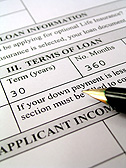Should You Choose an Open-End or a Closed-End Car Lease?
 You probably have asked yourself before renting a car, what type of lease will fit me best; an open-end lease or a closed-end lease. There are two distinct types of lease and it is important to understand their differences, especially at the end of a term, because it is at this moment that you need to take a decision regarding the residual value. The type of lease will weight a lot in your final decision, which is just as important as the choices you make at the beginning of the term.
You probably have asked yourself before renting a car, what type of lease will fit me best; an open-end lease or a closed-end lease. There are two distinct types of lease and it is important to understand their differences, especially at the end of a term, because it is at this moment that you need to take a decision regarding the residual value. The type of lease will weight a lot in your final decision, which is just as important as the choices you make at the beginning of the term.
Closed-End Lease
The closed-end lease is more popular with consumers. This type of lease put the lessor (the one who lends the vehicle) responsible for the depreciation, but in return the lease agreement limits the mileage and protects the vehicle from excessive damages. The contract predicts that the wear and tear will be normal.
In the end of the term, the lessee of a closed-end lease can exercise its buying option and purchase the vehicle at the residual value price, or return the car to the owner and pay penalties if there are excessive mileages and damages charges. The lessee is then not responsible for the vehicle depreciation outside of what it is settled in the contract.
At the end of the term, if the vehicle has positive equity, i.e. the market value of the vehicle is worth more than what it cost to purchase it at the residual value, it is more profitable to exercise the buying option and resell it after to make a profit. On the other hand, if there is negative equity, it is preferable for the lessee to return the vehicle to the owner and pay the excessive mileage and damage cost. At this moment, only the lessor amortizes the cost related to additional depreciation on the vehicle.
Open-End Lease
The open-end lease put the lessee responsible for the residual value, i.e. the lessee guarantees a value on the vehicle at the end of its use. In that sense, there is no mileage limit on the lease agreement.
At the end of the term, the lessee can purchase the vehicle at the price of the residual value indicated on the agreement, or return the vehicle and pay the difference between the residual value and its market value. The open-end lease puts all the financial risks on the lessee; he will pay the bill if the depreciation is worse than expected.
This type of leasing is more often used for commercial purposes, because the open-end lease gives unlimited mileages. We just have to think of transport and courier companies, they prefer to amortize the real cost of depreciation instead of paying penalties at the end. There is no mileage limit and the lessee takes full responsibility of the devaluation. Moreover, if the vehicle depreciates for other reasons than its usage, such as the brand image, old technology, unappreciated model, etc. the costs will also be transferred to the lessee.
Let's examine scenarios with open-end leases at the end of a term. If, for example, you are a company renting a vehicle and you have $15,000.00 as a residual value in the agreement, and the vehicle is worth $10,000.00 at the end of the term, you will have to pay the difference of $5,000.00 after returning the vehicle to its owner, or purchase the vehicle at $15,000.00.
It is different for consumers depending on the jurisdiction, or more specifically on the applicable protection consumer's law, because in the case of an open-end lease, an individual is responsible for only a part of the residual value. If you take the same example and the consumer is responsible by law for only 20% of the residual value, the lessee will have to pay $3,000.00, which is 20% of $15,000.00 instead of $5,000.00.
Which car lease will best suit me?
When you choose a type of lease, it is always preferable, as a consumer, to go for the closed-end lease in order to avoid surprising high costs at the end. It is very rare that the mileage end up being too high at the end of the term, unless it is for commercial purposes. The costs related to the excess mileages and excessive damages will rarely surpass the difference between the residual value and the market value of the vehicle.
The open-end lease is more targeted for companies. They are better built to absorb big financial hits coming from excessive depreciation, and they have more flexibility with their cost account. In addition, in case of default, damaging a commercial credit rating is not as bad as damaging a consumer credit rating, unless an individual decided to endorse the company. We have to remember that if you can't make your final payment on a lease, bad review will appear on your credit file and this will lower your credit rating.




